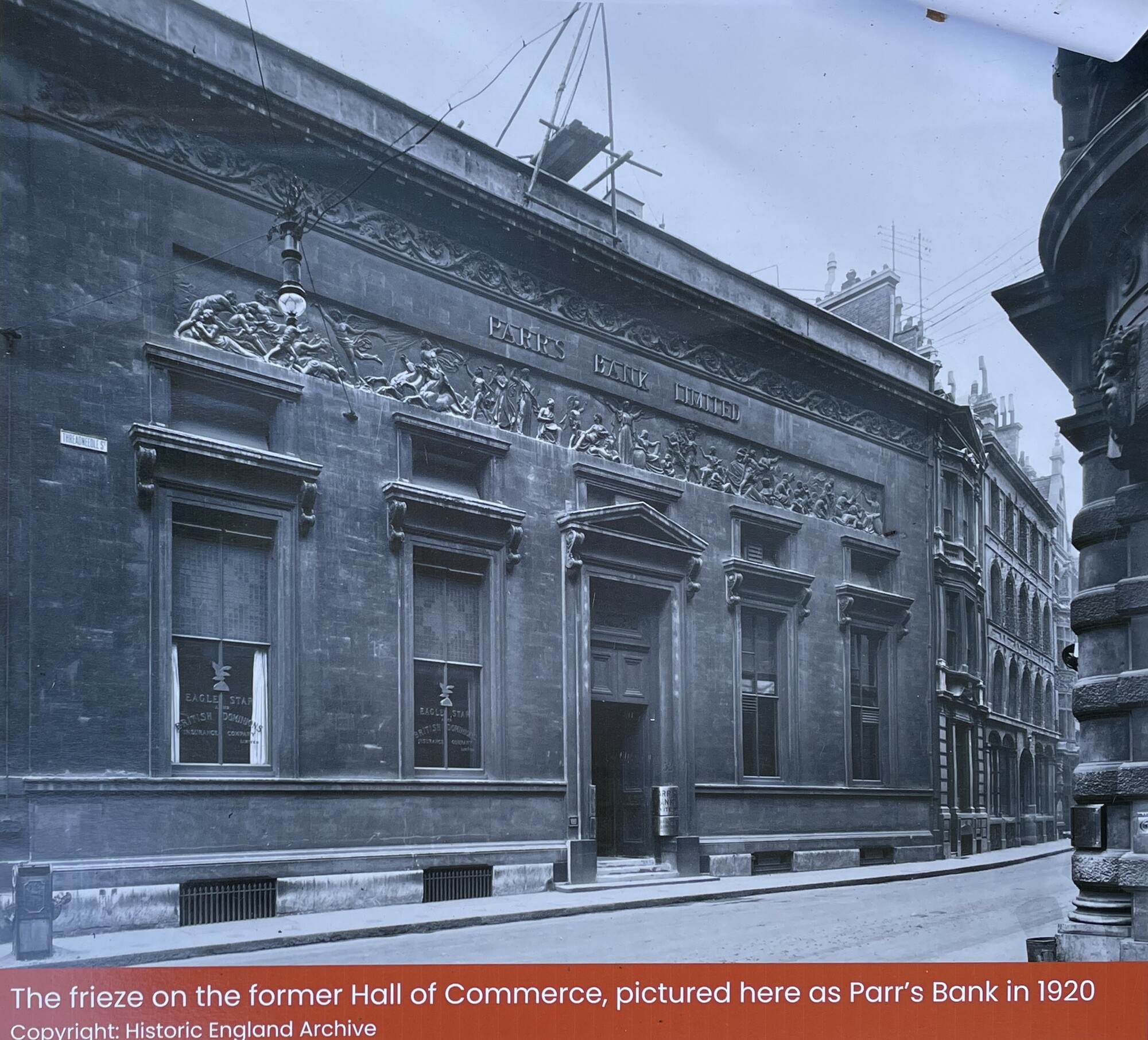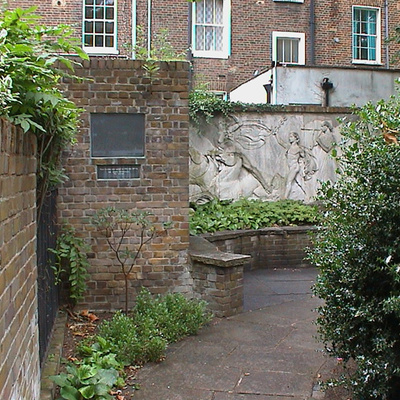From : The Hall of Commerce, existing some years ago in Threadneedle Street, was begun in 1830 by Mr. Edward Moxhay, a speculative biscuit-baker, on the site of the old French church. Mr. Moxhay had been a shoemaker, but he suddenly started as a rival to the celebrated Leman, in Gracechurch Street. He was an amateur architect of talent, and it was said at the time, probably unjustly, that the building originated in Moxhay's vexation at the Gresham committee rejecting his design for a new Royal Exchange. He opened his great commercial news-room two years before the Exchange was finished, and while merchants were fretting at the delay, intending to make the hall a mercantile centre, to the annihilation of Lloyd's, the Baltic, Garraway's, the Jerusalem, and the North and South American Coffee-houses. £70,000 were laid out. There was a grand bas-relief on the front by Mr. Watson, a young sculptor of promise, and there was an inaugurating banquet. The annual subscription of £5 5s. soon dwindled to £1 10s. 6d. There was a reading-room, and a room where commission agents could exhibit their samples. Wool sales were held there, and there was an auction for railway shares. There were also rooms for meetings of creditors and private arbitrations, and rooms for the deposit of deeds.
This photo, from the Historic England Archive, is on the information panel in Battishill Gardens, where we photographed it.
London Picture Archive has a .







Comments are provided by Facebook, please ensure you are signed in to see them